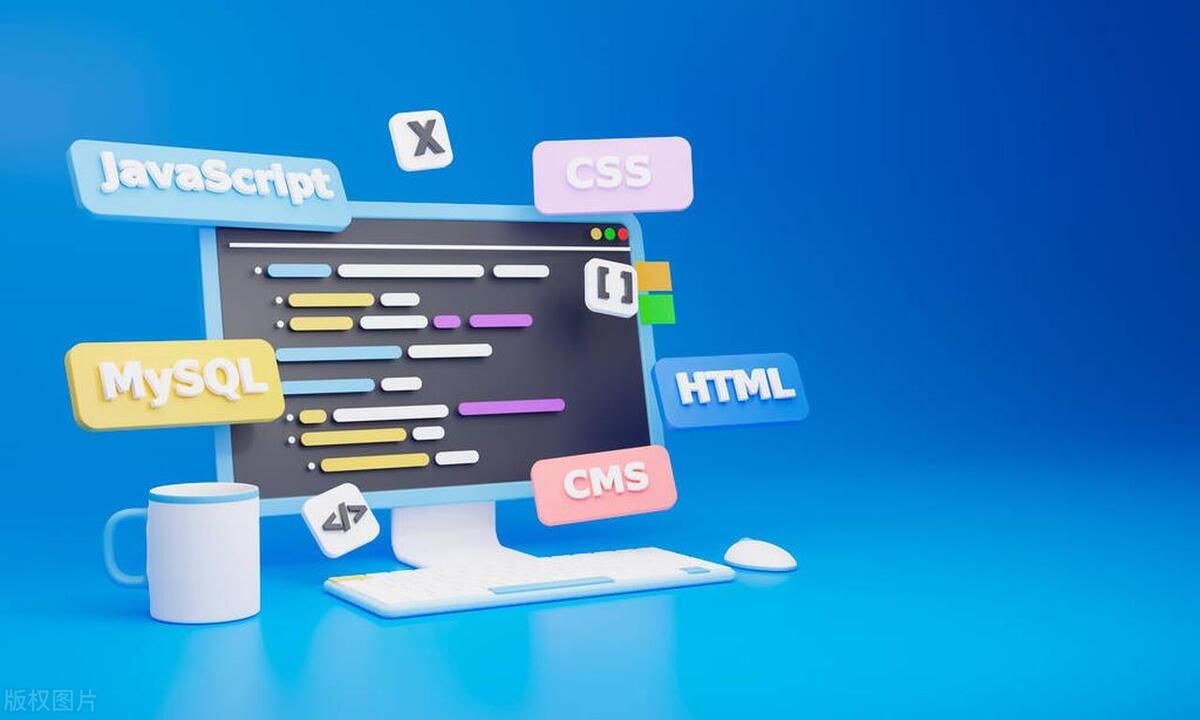The core purpose of a good front-end design is to improve the user experience, make users comfortable to use, find things, and see clearly. 1. A simple and intuitive information architecture requires fewer navigation bars, shallow page levels, and more control of the main menu within 5 items. Combining common icons and text, mobile terminals give priority to the bottom operation area. For example, e-commerce websites should highlight search boxes, classification portals and common functions. 2. Visual consistency improves usability. The button style, font size, and color need to be unified. Interaction methods such as click feedback and loading animation should also be consistent. Error prompts need to be unified in form and clear and easy to understand. 3. Responsive and clear feedback. The front-end needs to optimize performance, such as lazy image loading and components loading as needed. After the operation, there must be instant feedback, such as submitting the form to loading status, saving toast prompts, and clearly pointing out problems when errors are made to avoid users waiting or repeating operations.

The core purpose of a good front-end design is not to show off skills, but to make users comfortable to use, find things, and see clearly. User experience (UX) is crucial in front-end design, because no matter how good the feature is, if the user cannot find or cannot use it, it is equivalent to not being done. The key points are: clear structure, consistent operating logic, and quick feedback.

1. A simple and intuitive information architecture
When a user opens a web page or application, his first reaction is "Where should I start?" So the information structure must be simple and clear. The navigation bar should be small and refined to avoid stacking options; the page level should not be too deep, so try to let users find the target content within three clicks.
- Main menu is controlled within 5 items
- Use common icons and text to avoid "guessing games"
- The bottom operation area is preferred for the mobile terminal, which is convenient for thumb operation
For example, the homepage of an e-commerce website should highlight the search box, classification portal and commonly used functions of users (such as shopping carts, favorites), rather than stuffing promotional banners throughout the screen.

2. Visual consistency improves usability
Inconsistent visuals will confuse users. Button style, font size, and color usage should be consistent throughout the product. For example, if red in one place represents "delete" and the other place represents "submit", it will cause misunderstanding.
Consistency also includes interaction methods. For example, what feedback will appear after clicking on an element? Do I need to load the animation? These details seem small, but they affect users' judgment and trust.

For example, there are many ways to prompt errors on many websites, some pop-up windows, some turn red edges, and some only display text below. In fact, as long as you unify the method and ensure that the prompt information is clear and easy to understand, users can reduce repeated trial and error.
3. Responsive and clear feedback
Users are increasingly tolerant of response speed. Front-end design should not only focus on the visual level, but also on performance optimization. For example, lazy image loading, component loading as needed, avoiding redundant requests, etc.
At the same time, users must have immediate feedback after operations. for example:
- Add loading status when submitting the form
- The toast prompt pops up after successfully saving the data
- When an error occurs, it is clear which one is wrong
Don’t let users wait, and don’t know if it’s time to click or whether it’s successful. Even a simple button disabled state can effectively prevent problems such as repeated submissions.
Basically that's it. Front-end design is not just about writing good code, but more importantly, thinking about their habits and expectations from the perspective of users. Doing well may not be remembered, but once it is not done well, the user is likely to turn around and leave.
The above is the detailed content of Frontend Design Principles for User Experience. For more information, please follow other related articles on the PHP Chinese website!

Hot AI Tools

Undress AI Tool
Undress images for free

Undresser.AI Undress
AI-powered app for creating realistic nude photos

AI Clothes Remover
Online AI tool for removing clothes from photos.

Clothoff.io
AI clothes remover

Video Face Swap
Swap faces in any video effortlessly with our completely free AI face swap tool!

Hot Article

Hot Tools

Notepad++7.3.1
Easy-to-use and free code editor

SublimeText3 Chinese version
Chinese version, very easy to use

Zend Studio 13.0.1
Powerful PHP integrated development environment

Dreamweaver CS6
Visual web development tools

SublimeText3 Mac version
God-level code editing software (SublimeText3)
 How does React handle focus management and accessibility?
Jul 08, 2025 am 02:34 AM
How does React handle focus management and accessibility?
Jul 08, 2025 am 02:34 AM
React itself does not directly manage focus or accessibility, but provides tools to effectively deal with these issues. 1. Use Refs to programmatically manage focus, such as setting element focus through useRef; 2. Use ARIA attributes to improve accessibility, such as defining the structure and state of tab components; 3. Pay attention to keyboard navigation to ensure that the focus logic in components such as modal boxes is clear; 4. Try to use native HTML elements to reduce the workload and error risk of custom implementation; 5. React assists accessibility by controlling the DOM and adding ARIA attributes, but the correct use still depends on developers.
 Describe the difference between shallow and full rendering in React testing.
Jul 06, 2025 am 02:32 AM
Describe the difference between shallow and full rendering in React testing.
Jul 06, 2025 am 02:32 AM
Shallowrenderingtestsacomponentinisolation,withoutchildren,whilefullrenderingincludesallchildcomponents.Shallowrenderingisgoodfortestingacomponent’sownlogicandmarkup,offeringfasterexecutionandisolationfromchildbehavior,butlacksfulllifecycleandDOMinte
 What is the significance of the StrictMode component in React?
Jul 06, 2025 am 02:33 AM
What is the significance of the StrictMode component in React?
Jul 06, 2025 am 02:33 AM
StrictMode does not render any visual content in React, but it is very useful during development. Its main function is to help developers identify potential problems, especially those that may cause bugs or unexpected behavior in complex applications. Specifically, it flags unsafe lifecycle methods, recognizes side effects in render functions, and warns about the use of old string refAPI. In addition, it can expose these side effects by intentionally repeating calls to certain functions, thereby prompting developers to move related operations to appropriate locations, such as the useEffect hook. At the same time, it encourages the use of newer ref methods such as useRef or callback ref instead of string ref. To use Stri effectively
 Vue with TypeScript Integration Guide
Jul 05, 2025 am 02:29 AM
Vue with TypeScript Integration Guide
Jul 05, 2025 am 02:29 AM
Create TypeScript-enabled projects using VueCLI or Vite, which can be quickly initialized through interactive selection features or using templates. Use tags in components to implement type inference with defineComponent, and it is recommended to explicitly declare props and emits types, and use interface or type to define complex structures. It is recommended to explicitly label types when using ref and reactive in setup functions to improve code maintainability and collaboration efficiency.
 Server-Side Rendering with Next.js Explained
Jul 23, 2025 am 01:39 AM
Server-Side Rendering with Next.js Explained
Jul 23, 2025 am 01:39 AM
Server-siderendering(SSR)inNext.jsgeneratesHTMLontheserverforeachrequest,improvingperformanceandSEO.1.SSRisidealfordynamiccontentthatchangesfrequently,suchasuserdashboards.2.ItusesgetServerSidePropstofetchdataperrequestandpassittothecomponent.3.UseSS
 A Deep Dive into WebAssembly (WASM) for Front-End Developers
Jul 27, 2025 am 12:32 AM
A Deep Dive into WebAssembly (WASM) for Front-End Developers
Jul 27, 2025 am 12:32 AM
WebAssembly(WASM)isagame-changerforfront-enddevelopersseekinghigh-performancewebapplications.1.WASMisabinaryinstructionformatthatrunsatnear-nativespeed,enablinglanguageslikeRust,C ,andGotoexecuteinthebrowser.2.ItcomplementsJavaScriptratherthanreplac
 Vue CLI vs Vite: Choosing Your Build Tool
Jul 06, 2025 am 02:34 AM
Vue CLI vs Vite: Choosing Your Build Tool
Jul 06, 2025 am 02:34 AM
Vite or VueCLI depends on project requirements and development priorities. 1. Startup speed: Vite uses the browser's native ES module loading mechanism, which is extremely fast and cold-start, usually completed within 300ms, while VueCLI uses Webpack to rely on packaging and is slow to start; 2. Configuration complexity: Vite starts with zero configuration, has a rich plug-in ecosystem, which is suitable for modern front-end technology stacks, VueCLI provides comprehensive configuration options, suitable for enterprise-level customization but has high learning costs; 3. Applicable project types: Vite is suitable for small projects, rapid prototype development and projects using Vue3, VueCLI is more suitable for medium and large enterprise projects or projects that need to be compatible with Vue2; 4. Plug-in ecosystem: VueCLI is perfect but has slow updates,
 How to manage component state using immutable updates in React?
Jul 10, 2025 pm 12:57 PM
How to manage component state using immutable updates in React?
Jul 10, 2025 pm 12:57 PM
Immutable updates are crucial in React because it ensures that state changes can be detected correctly, triggering component re-rendering and avoiding side effects. Directly modifying state, such as push or assignment, will cause React to be unable to detect changes. The correct way to do this is to create new objects instead of old objects, such as updating an array or object using the expand operator. For nested structures, you need to copy layer by layer and modify only the target part, such as using multiple expansion operators to deal with deep attributes. Common operations include updating array elements with maps, deleting elements with filters, adding elements with slices or expansion. Tool libraries such as Immer can simplify the process, allowing "seemingly" to modify the original state but generate new copies, but increase project complexity. Key tips include each






